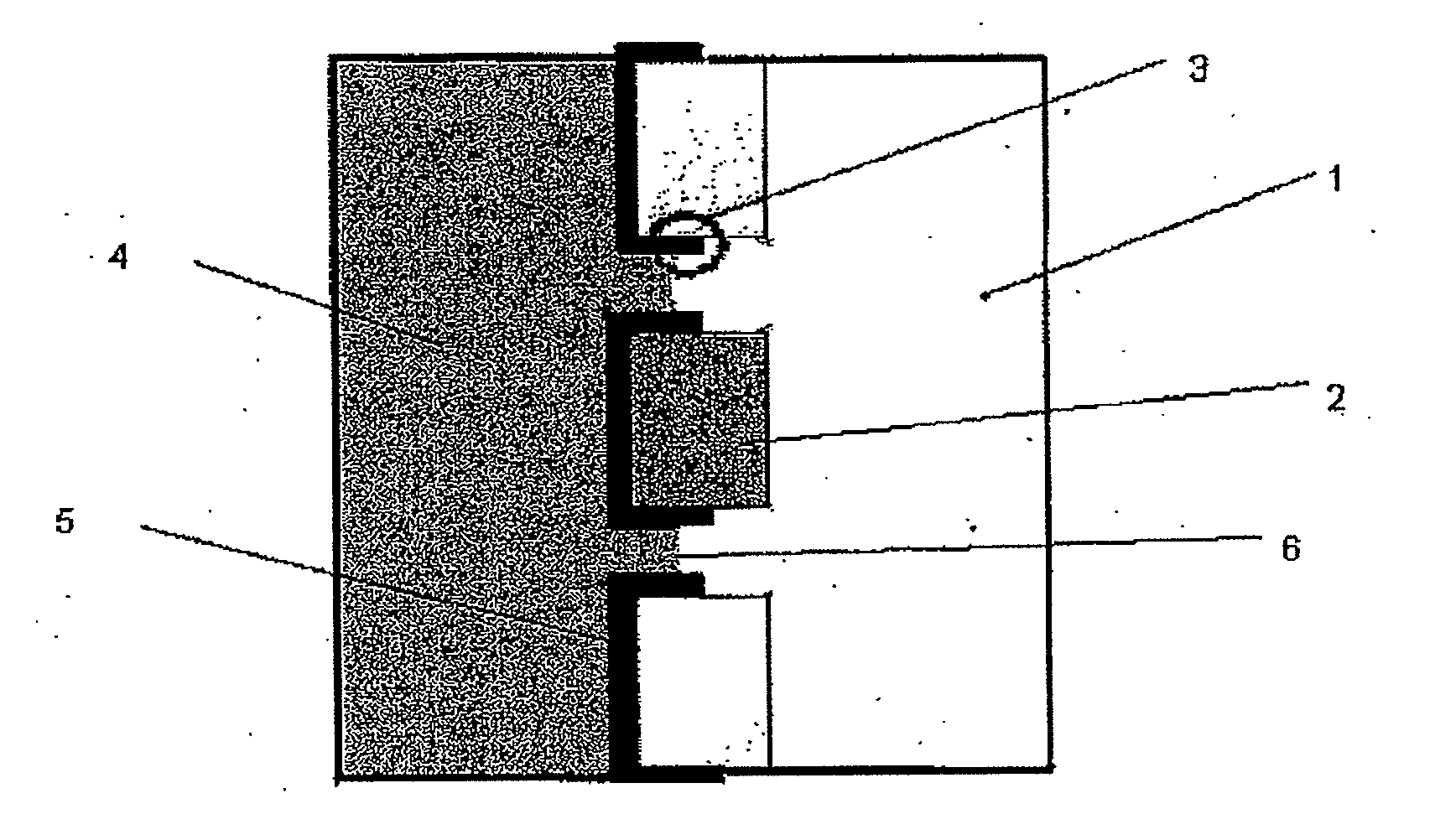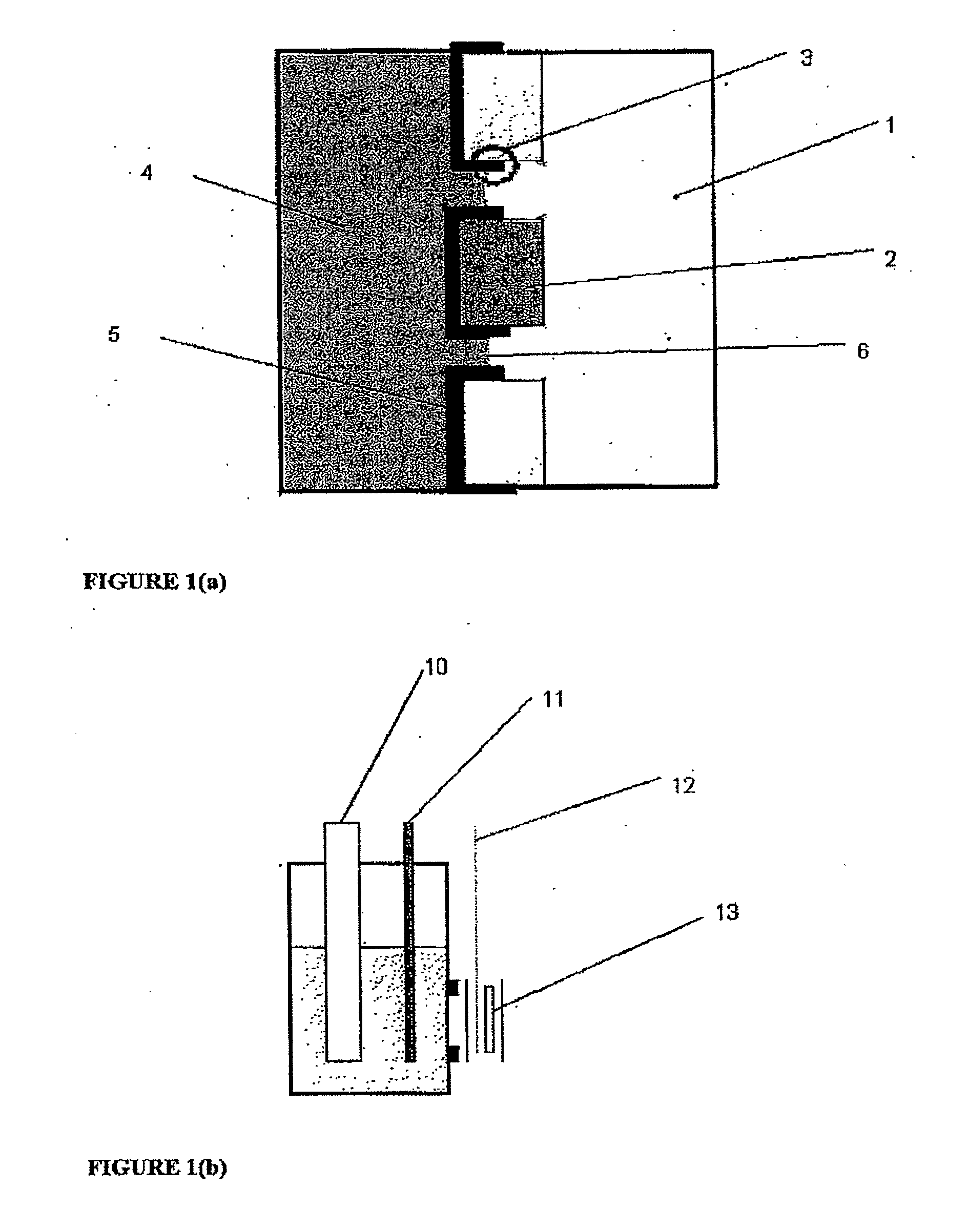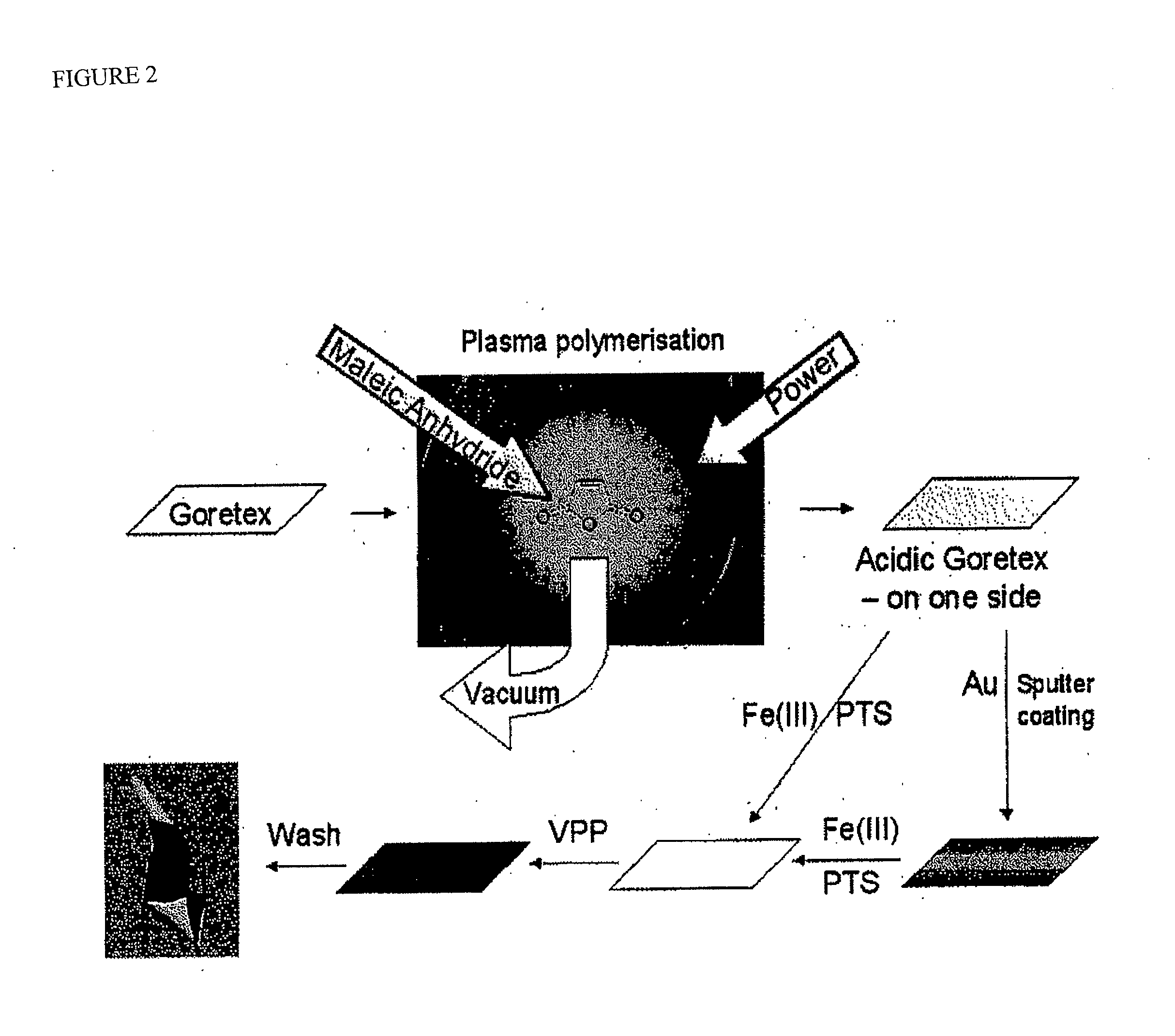Electrode for electrochemical cells
a technology of electrochemical cells and electrodes, applied in the field of electrochemical cells, can solve the problems of rapid diminution of the catalytic effect, high price of platinum, and complex construction of fuel cells, and achieve the effect of avoiding degradation or deterioration of performan
- Summary
- Abstract
- Description
- Claims
- Application Information
AI Technical Summary
Benefits of technology
Problems solved by technology
Method used
Image
Examples
example 1
PEDOT on Goretex
[0062]One embodiment of an electrode for the con of the present invention is depicted schematically in FIG. 1(a). The electrode was then included in an electrochemical cell of the type depicted at FIG. 2(e) and used in a series of experiments to characterise the present invention and compare its performance with more conventional constructions in some of the experiments the electrode also includes a thin layer (approx. 20 nm) of gold between the ICP and Goretex, the gold acting as a conductor. The results of these tests are depicted in FIGS. 3 to 10. The electrolyte used for each test is as specified below.
[0063]The electrode as depleted in FIG. 1 allows access of the air stream from one side of the electrode to a high-surface area electrochemically active layer of ICP which is simultaneously in contact with electrolyte. The structure of the underlying porous material is visible in the electrode indicating that a three-phase boundary interface is obtained over a subs...
example 2
PEDOT on Goretex in an H2 / O2 Fuel Cell
[0068]The PEDOT-Au-Goretex electrode described above was also used in a hydrogen / oxygen fuel cell comprising a Nafion polymer membrane. The electrode was used to replace the usual carbon / Pt cathode in the cell construction, so the carbon / Pt anode for hydrogen oxidation and the proton-conducting polymer membrane (Nafion®) was unchanged. The cell was placed in a graphite setup, ensuring good electrical and thermal contact. The humidity and the temperature of the cell were controlled during the test.
[0069]This fuel cell was used to generate the plot shown as FIG. 10 below. The discharge current was stepped up to 100□A / cm2 and the voltage measured over time, while hydrogen and oxygen was supplied to the cell with constant flow-rates.
example 3
Example 3(a)
PEDOT on Au and Au / Pt Coated Goretex
[0070]A PEDOT Au-Goretex electrode Was compared with a PEDOT-Au / Pt-Goretex electrode at different pH values. The latter was created by sputtering a 45 nm Pt layer onto the Au layer. The thickness of the Pt was measured on a glass slide exposed to same Pt sputter procedure.
[0071]The magnitudes of the conversion currents delivered by the PEDOT electrode are comparable to those of Pt for the same geometrical area of porous material. However, as seen in FIGS. 4(a) to 4(c), at low pH the platinum based electrode is more efficient whereas at higher pH the conversion currents are similar. Most proton conducting polymer membrane fuel-cells are operated at low pH.
[0072]Although the thicknesses are different for the Pt (45 nm) and PEDOT (400 nm) layers the differences in their densities (21.1 g / cm3 for Pt and approx 1.2 g / cm3 for PEDOT) means that the mass loading of active material is actually lower in the PEDOT case by a factor of about 2.
Exam...
PUM
| Property | Measurement | Unit |
|---|---|---|
| Current | aaaaa | aaaaa |
| Electrical conductor | aaaaa | aaaaa |
| Charge transfer state | aaaaa | aaaaa |
Abstract
Description
Claims
Application Information
 Login to View More
Login to View More - R&D
- Intellectual Property
- Life Sciences
- Materials
- Tech Scout
- Unparalleled Data Quality
- Higher Quality Content
- 60% Fewer Hallucinations
Browse by: Latest US Patents, China's latest patents, Technical Efficacy Thesaurus, Application Domain, Technology Topic, Popular Technical Reports.
© 2025 PatSnap. All rights reserved.Legal|Privacy policy|Modern Slavery Act Transparency Statement|Sitemap|About US| Contact US: help@patsnap.com



